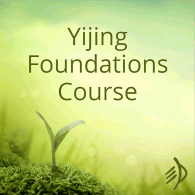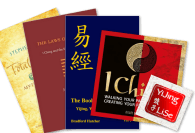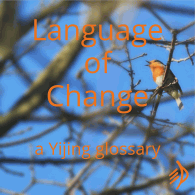
An excellent, independently published translation of the Zhouyi core. Unlike almost all translators who concentrate on that core alone, Lars is clear that it’s coherent and meaningful in its own right, and intended for use in divination. His translation reflects this: it’s fluent, it makes sense, and it’s eminently usable.
The book includes:
- An unusually good introduction – not in any way a rehashing of the usual Yijing book introduction, but 80 pages with information on history, structure and sources.
- The Zhouyi: Chinese text with line-by-line translation, using square brackets to show the translator’s interpolations, just like Legge. Each hexagram is followed by a glossary of most of the characters in the hexagram (the more commonly used characters get their own separate glossary, and there’s a section of the introduction dedicated to yuan, heng and zhen), giving their dictionary definitions along with notes on the translation.
- Appendices: the glossary of common characters; a full listing of the trigrams and hexagrams of numbers found on late Shang and early Zhou artefacts; the Chinese text; a long bibliography.
- A second version of the translation designed for easier use – no Chinese, no square brackets, and brief comment on the core meaning of each line.
- Instructions for yarrow and three coin consultation, and a hexagram look-up chart.
Here’s my full review of the book – its contents, what I particularly like about it, what it offers that’s unique, and some question marks over parts of the translation. (See the comments to that post from Harmen Mesker.)
I like
- the truly original thinking behind the interpretation
- the highly unusual combination of historical insight and coherent, usable text
- the extensive illustrated notes – pictures of beds and carriages, for instance
I wish
- I knew enough to assess the accuracy of the translation
Recommended for
- Anyone who’s fascinated by the Yijing and not quite sure they already know what it all means.
- Probably not for beginners except in combination with a more traditional book with longer commentary, such as the Wilhelm/Baynes.










